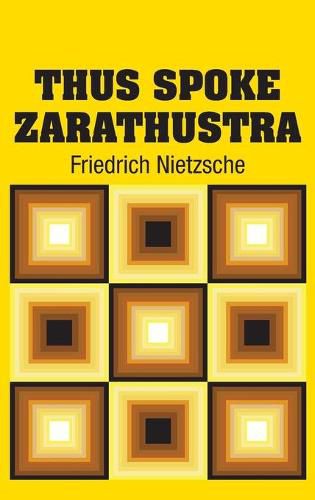Readings Newsletter
Become a Readings Member to make your shopping experience even easier.
Sign in or sign up for free!
You’re not far away from qualifying for FREE standard shipping within Australia
You’ve qualified for FREE standard shipping within Australia
The cart is loading…






Friedrich Nietzsche was at times a misunderstood guy, maybe even accidentally controversial.
He was outwardly critical of Christianity yet probably secretly identified with those who taught doctrine and morality as a teacher of thought for the masses.
Also, he was also opposed very vocally to nationalism and antisemitism, yet after his death, his sister became the curator of his works and twisted them to accommodate her German nationalist views. Later on, they practically became required reading for fascists and Nazis. (He was probably rolling over in his grave.) It wasn’t until the 20th century that scholars reinterpreted and corrected his works to reflect their original intent.
Finally, the narrative style in which it was written (Zarathustra as the protagonist on a hero’s journey) made it quite popular with the public at the time. It also made it unpopular with the academics of his time. Some speculate he did this on purpose.
Despite these juxtapositions, his philosophies on man’s identity and evolution, the nature of reality, and religion, were very focused. Very much a naturalist, Nietzsche was inspired to write Zarathustra while happening upon a huge pyramidal rock while on a walk along the shores of lake Silvaplana. He considered it to be his magnum opus, discussing his concepts of eternal recurrence, the Ubermensch, the will to power, and his criticism of Christianity.
Nietzsche succumbed to mental illness in 1889, and eventually died from a stroke resulting from other health issues in 1900.
$9.00 standard shipping within Australia
FREE standard shipping within Australia for orders over $100.00
Express & International shipping calculated at checkout
Friedrich Nietzsche was at times a misunderstood guy, maybe even accidentally controversial.
He was outwardly critical of Christianity yet probably secretly identified with those who taught doctrine and morality as a teacher of thought for the masses.
Also, he was also opposed very vocally to nationalism and antisemitism, yet after his death, his sister became the curator of his works and twisted them to accommodate her German nationalist views. Later on, they practically became required reading for fascists and Nazis. (He was probably rolling over in his grave.) It wasn’t until the 20th century that scholars reinterpreted and corrected his works to reflect their original intent.
Finally, the narrative style in which it was written (Zarathustra as the protagonist on a hero’s journey) made it quite popular with the public at the time. It also made it unpopular with the academics of his time. Some speculate he did this on purpose.
Despite these juxtapositions, his philosophies on man’s identity and evolution, the nature of reality, and religion, were very focused. Very much a naturalist, Nietzsche was inspired to write Zarathustra while happening upon a huge pyramidal rock while on a walk along the shores of lake Silvaplana. He considered it to be his magnum opus, discussing his concepts of eternal recurrence, the Ubermensch, the will to power, and his criticism of Christianity.
Nietzsche succumbed to mental illness in 1889, and eventually died from a stroke resulting from other health issues in 1900.